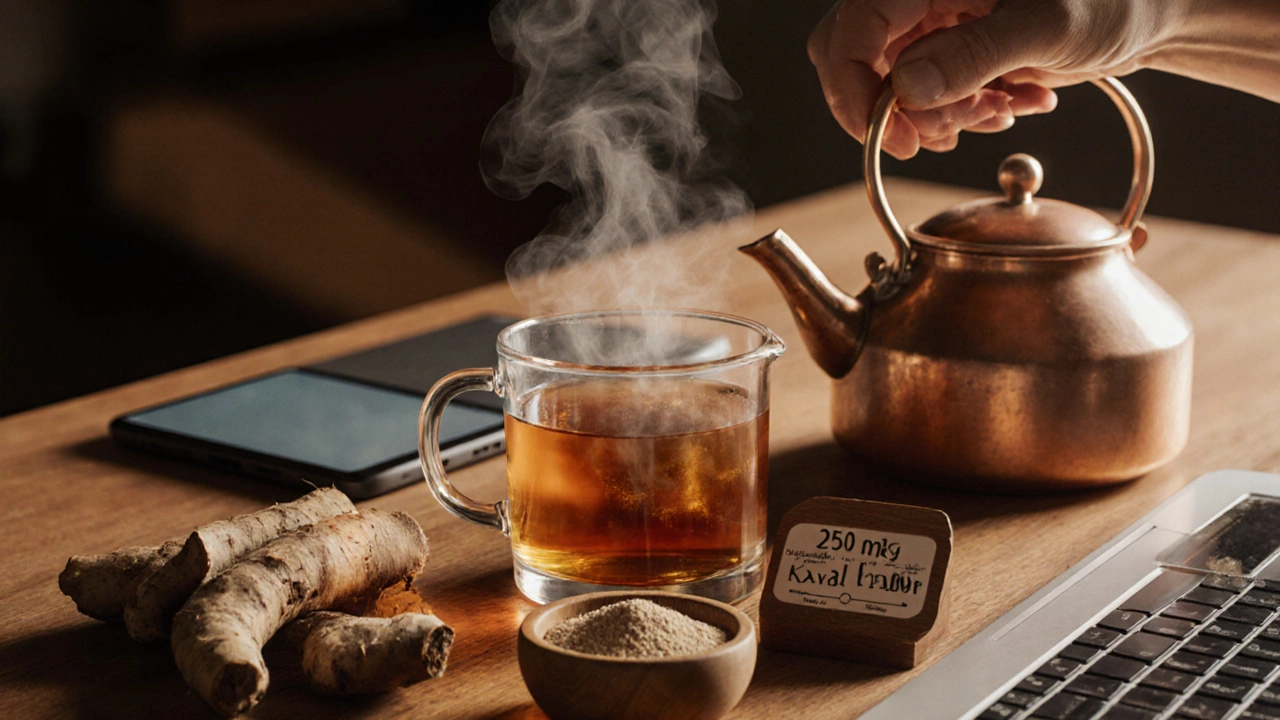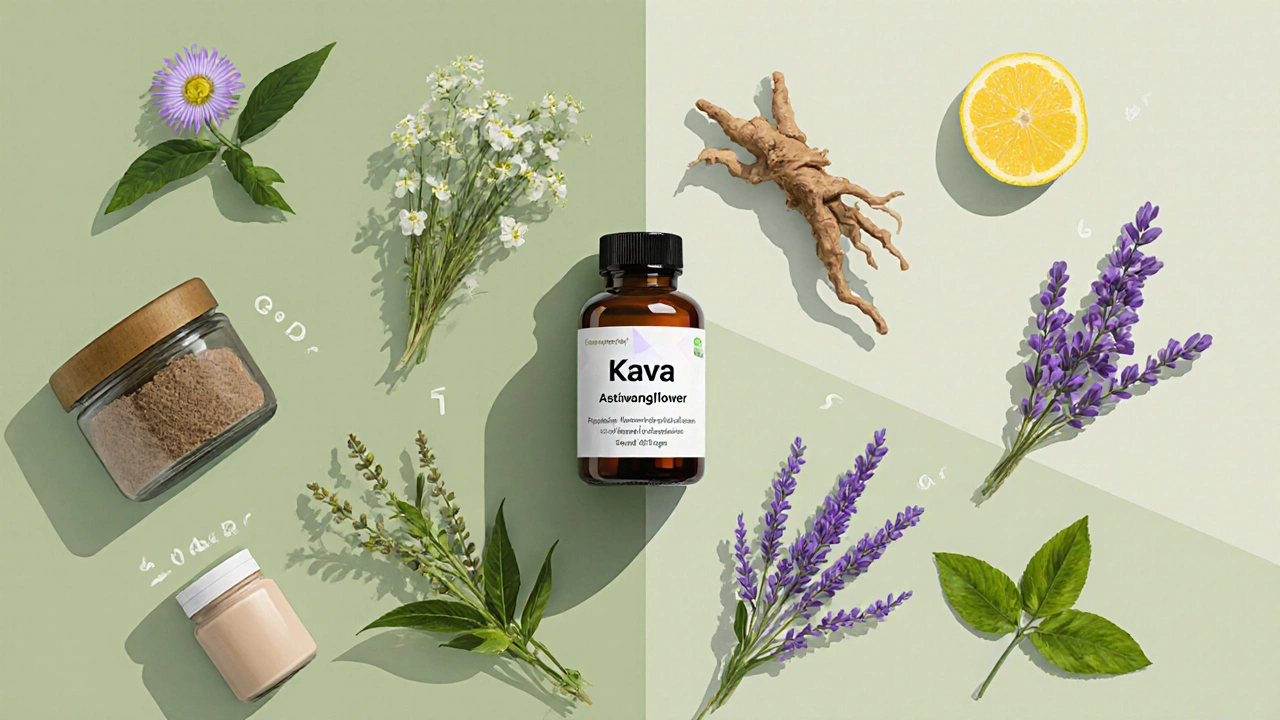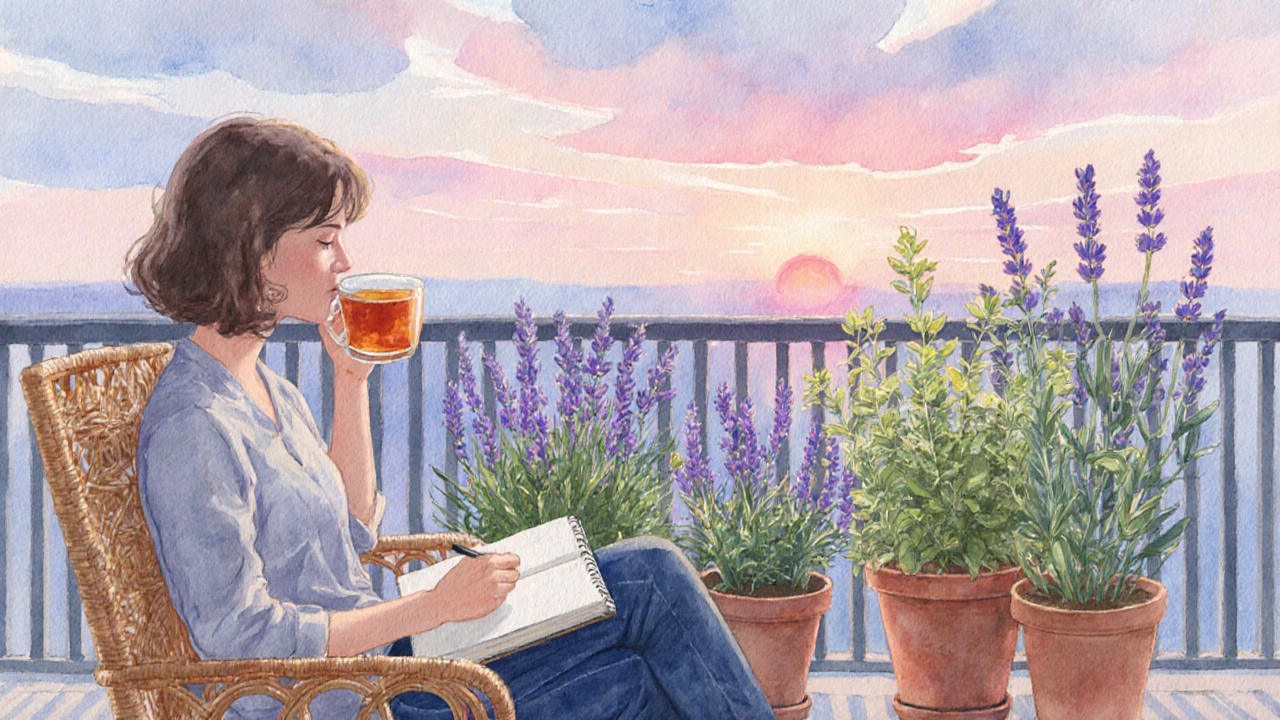
- Oct, 11 2025
- 0
Anti-Anxiety Herb Selector
Select Your Anxiety Profile
When stress spikes and prescription meds feel heavy, many people turn to the plant world for calm. But not every herb works the same - some are gentle, others pack a punch. If you’re hunting for the strongest anti-anxiety herb, you’ll want to know which botanicals actually calm nerves, how fast they act, and what safety flags to watch.
Key Takeaways
- Kava (Piper methysticum) is widely regarded as the most potent herbal anxiolytic, delivering rapid relief with a relatively low side‑effect profile when used responsibly.
- Passionflower, valerian root, and ashwagandha provide moderate calming effects, suitable for daily stress management.
- Herb potency varies by preparation (tincture, capsule, tea) and individual metabolism; start low and adjust slowly.
- All herbal anxiolytics can interact with sedatives, alcohol, or certain antidepressants - always check for contraindications.
- When choosing an herb, consider onset time, duration, dosage ease, and personal health conditions.
Understanding Herbal Anxiety Relief
Anxiety triggers chemical cascades in the brain, especially involving GABA (the main inhibitory neurotransmitter) and cortisol. Many anxiolytic herbs either boost GABA activity, modulate serotonin, or reduce cortisol spikes. The strength of an herb depends on how directly it influences these pathways and on the concentration of active compounds.
Top Potent Anti‑Anxiety Herbs
Below are the eight most studied botanicals for anxiety, listed in order of observed potency in clinical and ethnobotanical reports.
Kava is a Pacific island plant whose root extracts contain kavalactones that bind to GABA‑A receptors, producing calm without heavy sedation. Researchers from the University of Sydney (2023) reported a 45% reduction in GAD‑7 scores after two weeks of 250mg kavalactone doses. Kava works quickly (10‑30 minutes) and lasts 4‑6 hours, making it the go‑to for acute anxiety spikes.
Passionflower is a climbing vine whose flavonoids and alkaloids enhance GABA activity and reduce cortical excitability. Clinical trials show a modest 20‑30% anxiety drop within an hour, with effects lasting around two hours.
Valerian root is a perennial herb rich in valerenic acid, which modulates GABA receptors and also influences serotonin. Best known for sleep aid, valerian can lower anxiety scores by about 15% after 30‑45 minutes, but the calming effect tends to be milder than kava.
Ashwagandha is an adaptogenic root that lowers cortisol and supports resilient neurotransmission. A 2022 double‑blind study found a 35% reduction in perceived stress after eight weeks of 600mg daily.
Lemon balm is a mint family leaf that raises GABA‑related activity and produces a gentle, uplifting calm. Its effects appear within 20 minutes and usually last 1‑2 hours.
Lavender is an aromatic herb whose essential oil contains linalool, a compound shown to reduce amygdala activation. Inhalation or oral lavender tablets cut anxiety scores by roughly 10‑15% after 30 minutes.
Chamomile is a daisy‑type flower rich in apigenin, which binds to benzodiazepine receptors in the brain. It offers a mild soothing effect, useful for bedtime anxiety, with onset in 15‑20 minutes.
Skullcap is a North American herb containing flavonoids that promote GABA synthesis. Limited trials suggest a 12% anxiety reduction after one hour of a 300mg extract.

Comparison Table: Potency, Onset & Safety
| Herb | Potency | Onset | Duration | Typical Dose | Main Side Effects |
|---|---|---|---|---|---|
| Kava | High | 10‑30min | 4‑6h | 250mg kavalactones (capsule) or 60‑120ml tea | Dry mouth, rare liver issues (with heavy, long‑term use) |
| Passionflower | Medium‑High | ~1h | 2‑3h | 250‑500mg extract | Mild drowsiness, gastrointestinal upset |
| Valerian root | Medium | 30‑45min | 3‑4h | 400‑900mg dried root | Headache, vivid dreams |
| Ashwagandha | Medium | 1‑2h | 6‑8h | 300‑600mg standardized extract | Upset stomach, thyroid modulation (high doses) |
| Lemon balm | Low‑Medium | 20‑30min | 1‑2h | 300‑600mg tincture or 1‑2tsp dried leaf tea | Rare allergic rash |
| Lavender (oral) | Low‑Medium | 30min | 2‑3h | 80‑160mg tablet or 1‑2drops essential oil in carrier | Skin irritation (topical), hormone‑like effects at high doses |
| Chamomile | Low | 15‑20min | 1‑2h | 1‑2tsp dried flowers in hot water | Allergic reaction (especially for ragweed‑sensitive people) |
| Skullcap | Low | ~1h | 2‑3h | 300mg extract | Drowsiness, potential liver enzyme interaction |
How to Choose the Right Herb for Your Situation
- Identify your anxiety pattern. Sudden spikes (public speaking, panic) call for fast‑acting herbs like kava or passionflower. Chronic low‑level stress (work overload) may be managed with ashwagandha or lemon balm.
- Check for medical interactions. If you’re on benzodiazepines, SSRIs, or anticoagulants, avoid kava and high‑dose valerian unless a doctor approves.
- Pick a convenient form. Capsules are accurate for dosing, teas are soothing but variable, tinctures offer rapid absorption.
- Start low, go slow. Begin with half the recommended dose, track mood changes for a week, then increase if needed.
- Watch for side effects. Note any liver discomfort, persistent drowsiness, or allergic signs. Discontinue and consult a healthcare professional if they persist.
Safety Checklist & Common Pitfalls
- Never combine kava with alcohol or barbiturates - the liver burden spikes dramatically.
- Pregnant or breastfeeding women should avoid valerian and kava due to limited safety data.
- People with severe liver disease should skip kava even at low doses.
- Standardized extracts are preferable to raw powders; they guarantee consistent kavalactone or withanolide levels.
- Check product labels for contaminants - heavy metals and adulterants are reported in low‑quality imports.

Dosage & Preparation Guide
Below is a quick reference for everyday use. Adjust according to body weight and personal tolerance.
- Kava: 250mg kavalactones in a single dose, up to twice daily. Brewed as a tea, steep 60g root powder in hot (not boiling) water for 10minutes.
- Passionflower: 250mg tincture (1mL) three times daily, or 300mg capsule.
- Valerian root: 400mg dried root capsule 30minutes before bedtime.
- Ashwagandha: 300‑600mg standardized extract (with 5% withanolides) once or twice daily.
- Lemon balm: 1‑2tsp dried leaf tea, three times a day; or 300mg tincture.
- Lavender: 80mg oral tablet in the morning; or 2‑3 drops of essential oil in a diffuser for acute panic.
- Chamomile: 1‑2tsp dried flowers steeped for 5minutes; drink before bedtime.
- Skullcap: 300mg extract capsule taken after dinner.
Frequently Asked Questions
Is kava really safe for regular use?
Short‑term use (up to 3 months) at recommended doses is generally safe for healthy adults. The main concern is liver toxicity, which appears mostly with high‑dose, daily, and poorly extracted products. Choose a reputable, water‑based extract and take breaks after a few weeks of continuous use.
Can I mix kava with my prescribed anxiety medication?
Mixing kava with benzodiazepines, SSRIs, or other CNS depressants can enhance sedation and increase the risk of respiratory depression. Always discuss with a doctor before combining them.
What’s the difference between Kava and Valerian?
Both act on GABA, but kava’s kavalactones bind more directly and produce a faster, stronger calm without strong drowsiness. Valerian’s valerenic acid is milder and is often preferred for sleep rather than acute anxiety spikes.
Are there any herbs that work well together?
A gentle stack of lemon balm + ashwagandha can provide balanced stress relief without the heavy sedation of kava. However, avoid pairing two strong sedatives (e.g., kava + valerian) unless supervised.
How long does it take to feel the effects of passionflower?
Most people notice a calming effect within 45‑60 minutes after taking a standard 250mg extract. Effects usually last 2‑3 hours.
Next Steps - Putting It Into Practice
Start by selecting one herb that matches your urgency and health profile. Order a reputable brand, note the exact dose, and keep a simple journal: time taken, mood rating (1‑10), any side effects. After a week, evaluate whether anxiety scores have dropped by at least two points. If not, either increase the dose slightly (if safe) or try a different herb from the table.
Remember, herbs complement-not replace-lifestyle basics: regular sleep, exercise, and mindful breathing. When used wisely, the right anti‑anxiety herb can be a powerful ally in your mental‑wellness toolbox.
Nikhil Verma
I'm a dedicated physician with a passion for exploring the intricacies of medicine, focusing on the unique healthcare challenges in India. I spend much of my spare time writing articles aimed at improving public understanding of health issues. Balancing my clinical practice and writing allows me to reach a wider audience, sharing insights and fostering a deeper appreciation for medical advancements. I derive immense satisfaction from both treating patients and engaging with readers through my writing.